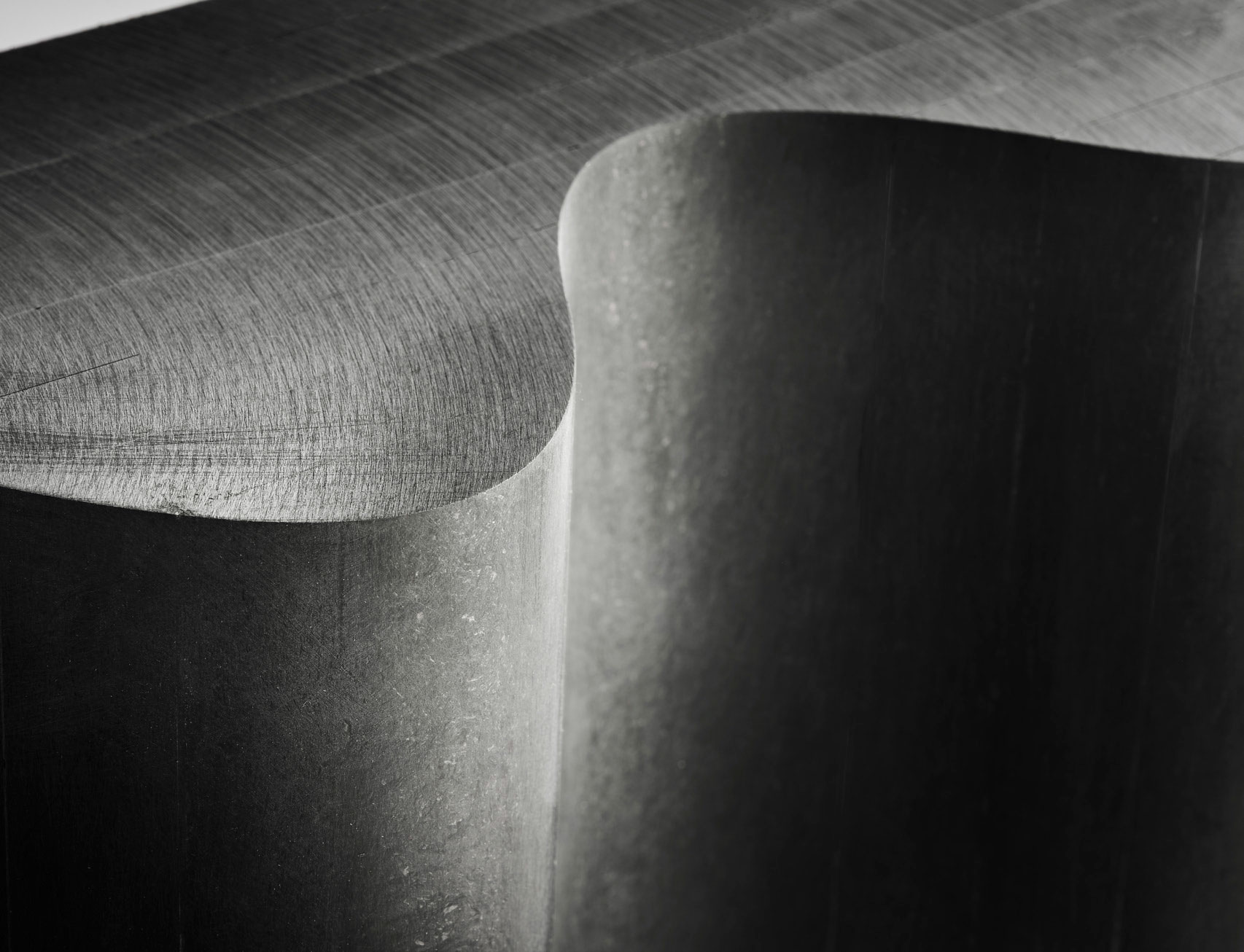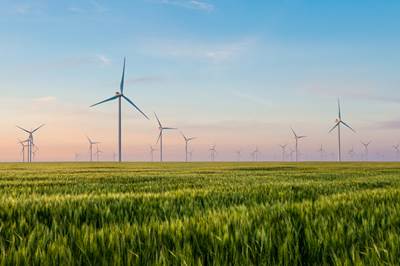Composites Use in Wind/Energy Markets
The wind energy market has long been considered the world’s largest market, by volume, for glass fiber-reinforced polymer (GFRP) composites — and increasingly, carbon fiber composites — as larger turbines and longer wind blades are developed, requiring higher performance, lighter weight materials. The outer skins of wind and tidal turbine blades generally comprise infused, GFRP laminates sandwiching foam core. Inside the blade, rib-like shear webs bonded to spar caps reinforce the structure. Spar caps are often made from GFRP or, as blade lengths lengthen, pultruded carbon fiber for additional strength.

Latest Wind/Energy Articles
VIEW ALLExel Composites plant in India begins volume shipments of carbon fiber wind energy components
Joint venture Kineco Exel Composites India has reached full-scale production at the Banda facility, which is now shipping IEC 61400-5-certified flats, joiners and bolt fixtures to support major wind OEMs.
Read MoreAnemoi rotor sails successfully installed on Taiwanese bulk carrier
U-Ming Transport’s Grand Pioneer VLOC vessel is expected to save an average 10-12% fuel emissions during deep-sea service between Brazil and China.
Read MoreInstelStore finds U.S. wind turbine blade repairs exceed $1 billion in 2025
More than $255.7 million in repairs are being undertaken this year due to lightning damage, with blade root failure in close second, suggesting needed innovation in more resilient materials, or a method for in situ repairs.
Read MoreBladeBridge repurposes Energia Group decommissioned wind blade into practical site amenity
Collaborative effort turns EOL blade into a rest area and memorial along the Meenadreen Wind Farm’s Leghowney Loop trail, blending sustainable design and functionality.
WatchREFRESH wind blade recycling data shows promising environmental benefits
Initial LCA processing carbon and glass fibers evaluates mechanical and thermal recycling methods, finds environmental reduction impact surpasses the impact associated with the recycling processes themselves.
Read MoreGen 2 Carbon, Americarb launch rCF strategy for clean energy
Combined expertise unlocks novel applications for rCF in batteries, fuel cells, electrolyzers and structural energy storage.
Read MoreKnowledge Centers

CW’s editors are tracking the latest trends and developments in tooling, from the basics to new developments. This collection, presented by Composites One, features four recent CW stories that detail a range of tooling technologies, processes and materials.
LEARN MORELatest Wind/Energy News And Updates
Market report: Composites and carbon fiber in hydrogen storage
This first-of-its-kind technical report from ÂÌñÏ×ÆÞ breaks down the key economic and engineering variables influencing carbon fiber composite tanks for hydrogen-powered mobility.
Read MoreGuanglian Aviation achieves milestone in carbon fiber circular chains development
Following six years of R&D, Guanglian Aviation has introduced circular chains made from carbon fiber and Kevlar that weigh 4-5X less than metal chains, offer 15-year saltwater corrosion resistance, and are poised for large-scale applications in marine engineering, mining and defense.
Read MoreStartup Akvotransiro trials Wind2Water catamaran built from discarded wind turbine blades
Four-person prototype is one of many in-development hulls, floating docks and pontoons comprising bamboo composites and EOL wind blades re-engineered into reliable, environmentally conscious water vessels.
Read MoreTPI Composites initiates voluntary Chapter 11 proceedings
TPI and its U.S. subsidiaries commence filed bankruptcy proceeding and pursue a court-approved restructuring supported by $82.5 million in financing, allowing the company to maintain normal operations and strengthen its long-term position amid industry challenges.
Read MoreNovafast wins Australian export award
Glass fiber pipe manufacturer looks to expand its manufacturing footprint outside of Australia to meet needs in harsh environments.
Read MoreDFS Composites acquires Mexico wind blade tooling facility, expands North American operations
With a new 300,000-square-foot site in Ciudad Juárez, DFS Composites boosts its global footprint and ability to supply composite tooling for wind energy across the Americas.
Read MoreFeatured Posts
Ceramic matrix composites: Faster, cheaper, higher temperature
New players proliferate, increasing CMC materials and manufacturing capacity, novel processes and automation to meet demand for higher part volumes and performance.
Read MoreRevolutionizing space composites: A new era of satellite materials
A new approach for high volumes of small satellite structures uses low-CTE, low-cost CFRP cellular core, robust single-ply skins and modular panel systems to cut lead time, labor and cost for reflectors, solar arrays and more.
Read MoreHybrid composite architecture enables rigid wind propulsion solution for maritime decarbonization
GT Wings’ AirWing leverages aerospace engineering principles combined with hybrid glass and carbon fiber composite construction to deliver up to 30% fuel savings through compact, deck-compatible wind propulsion.
WatchComposites end markets: Energy (2025)
Despite political and supply chain challenges, renewable and nuclear energy continue to grow in use. Composite materials enable current and future energy technologies across sectors.
WatchRecycled carbon fiber composite panels power 40% lighter, durable semi-rigid solar panels
Designed for auxiliary power use while traveling via boat or RV, Italian startup Levante’s custom flexible or standardized semi-rigid solar panels combine the benefits of ReCarbon’s rCF and thermoplastics.
WatchIn oil and gas, an additive manufacturing standard (API 20T) will aid adoption of composites
Polymer AM equipment maker Roboze sees how the oil and gas industry’s way forward with additive is like that of another high-stakes industry, aerospace, and also different in important aspects.
WatchFAQ: Wind/Energy
What are wind turbine blades made from?
- The outer skins of wind and tidal turbine blades generally comprise infused, GFRP laminates sandwiching foam core. Inside the blade, rib-like shear webs bonded to spar caps reinforce the structure. Spar caps are often made from GFRP or, as blade lengths lengthen, pultruded carbon fiber for additional strength.
- Source: Composites end markets: Renewable energy
What energy applications are composites used for?
In renewable energy, fiberglass composites are used, most prominently, to build wind turbine blades and nacelles. Carbon fiber composites are also used to build wind blade spar caps. Hydroelectric turbines, tidal energy turbines and other forms of renewable energy have also made use of composites.
In oil and gas, composites have long been used as a corrosion-resistant metal alternative for a number of applications, including components for protecting wellheads, manifolds and other equipment related to subsea processing, and offshore pipelines themselves.
What happens to wind blades at the end of their lifespan?
As wind energy ramps up, recycling of composite wind blades at their end of life (EOL) – as well as composites and plastics recycling in general – continues to be a topic of concern.
More than 80% of a wind turbine itself is typically metallic and recyclable, but the increasingly long, high-performance composite blades pose more of a challenge.
Efforts include:
-
-
- Near-term: Ramping up existing recycling methods like mechanical chopping up blades or repurposing entire blades for other uses
- Medium-term: Developing more efficient methods such as chemical recycling (solvolysis) for reclaiming the original fibers from EOL blades for reuse
- Long-term: Designing and manufacturing wind blades with sustainable/recyclable materials
-



















